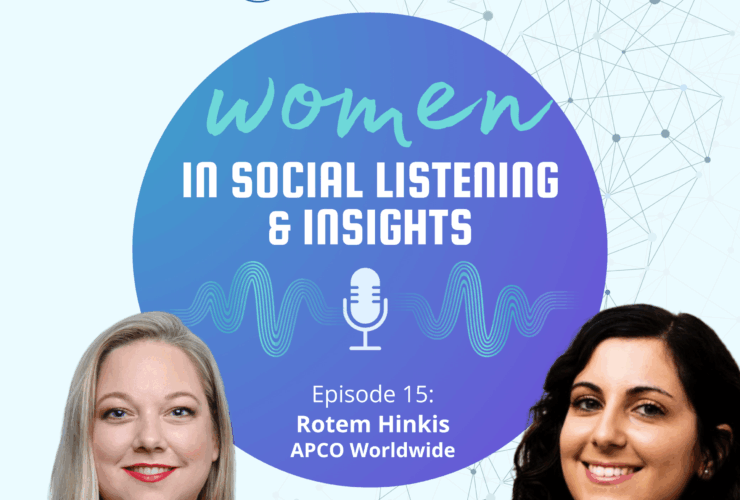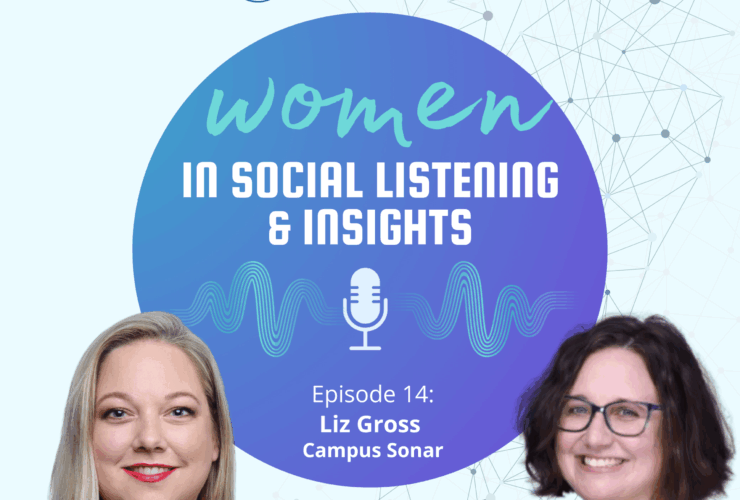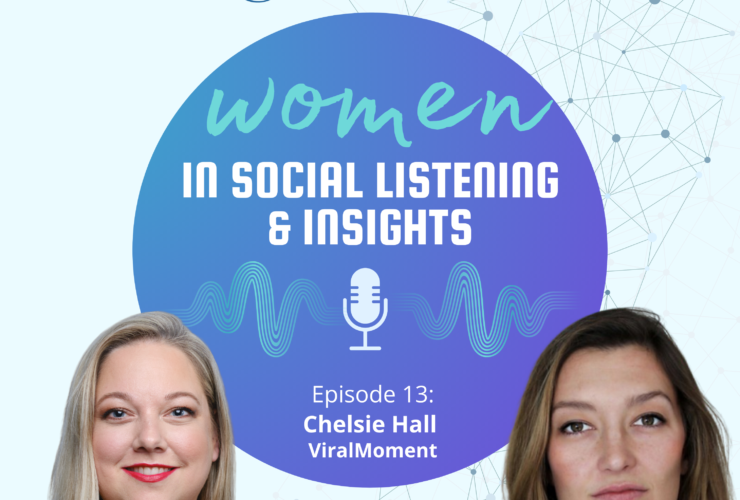Picture this: A teenager films herself trying your product for the first time, her genuine surprise when it actually works, and then her friends gathering around to try it too – all captured in a 30-second TikTok that gets 50,000 views overnight. This isn’t just content; it’s consumer research playing out in real-time, for free, in public.
Welcome to 2025, where the world’s biggest focus group isn’t behind a two-way mirror – it’s streaming live across social platforms.
In an age where consumers express themselves through TikToks, livestreams and Reels, understanding your audience means going beyond surveys and text. While comprehensive social listening and audience analysis across all digital channels remains essential, listening to video has become a critical, often overlooked complement to traditional insight approaches. These visual expressions often reveal what text-based data cannot – showing authentic behaviours, reactions and contexts that words alone might miss.

Platforms like YouTube, Instagram and TikTok aren’t just entertainment hubs – they’re living, breathing consumer insight engines where people reveal their preferences, habits and motivations through user-generated content (UGC). According to the Data Reportal’s Digital 2024 Global Overview Report, YouTube alone hosts 2.5 million active users (second only to Facebook’s 3 million) and watching videos ranks as the third most common reason people use the internet today, with 92% of internet users viewing videos online regularly.
Why Social Video Listening Matters for Market Research
The numbers tell a compelling story, but the real power lies in what they represent – authentic consumer behaviour:
Influence That Drives Purchasing
-
- That makeup tutorial or unboxing video isn’t just entertainment – it’s persuasion in action. Roughly 82% of consumers have made purchases after watching videos about products.
- The ROI speaks for itself: 90% of marketers report strong returns from video investments. Those aren’t just views; they’re conversions.
Explosive Growth
- Based on projections from Statista, global video advertising spend is projected to reach a staggering £184.5 billion by 2028.
- For Gen Z, scrolling through TikTok or Instagram Reels has become the default product discovery method. They’re not opening your emails or reading your blog – they’re watching 15-second clips.
The Researcher’s Gold Mine: While surveys tell you what consumers claim they do, videos show you what they actually do – often when they don’t think anyone’s analysing.
Understanding the Video Landscape: A Rich Data Source
Today’s social video ecosystem is messy, authentic and incredibly revealing:
- Where The Action Is: YouTube for in-depth content, TikTok for trends and instant reactions, Instagram for lifestyle and aspirational content.
- Content That Connects: Music-driven montages, day-in-my-life vlogs, honest product reviews, live Q&As and educational deep-dives.
- Why People Watch: Sometimes for pure entertainment, sometimes for practical information, often to feel connected to communities and increasingly to decide what to buy next.
For researchers, the beauty is in the patterns – where conversations start, how they evolve and what triggers them to jump from niche communities to mainstream attention.
Beyond Metrics: Uncovering the Human Truth Behind Video
Quantitative metrics like views and shares tell us what happened. But to understand why – you need to watch and listen.
Video content captures what text analytics miss:
- Raw Emotion: The genuine surprise when a product works better than expected, the subtle disappointment that algorithms can’t detect.
- Real-World Context: Is your beverage being consumed at parties or alone at home? At breakfast or midnight? These visual cues tell you everything.
- Cultural Signals: The inside jokes, the references, the way language evolves – video captures cultural moments as they happen.

Take our recent project analysing frozen beverages. Hashtag analysis showed popularity among university students, but the videos revealed something more valuable: these weren’t just refreshment occasions. The videos showed friendships forming around shared drinks, study sessions fuelled by frozen coffees and late-night hall of residence rituals. This wasn’t just product usage – it was cultural integration.
We saw something similar in a study focused on chronic skin conditions, where we analysed YouTube videos and comments to explore how patients talk about Urticaria. Beyond the surface-level mentions, the content revealed emotional journeys, common misconceptions about causes and treatments and a clear need for better information. It was a reminder that video doesn’t just show what people experience – it shows how they make sense of it.
We’re always happy to chat more about how we approached these projects, so do reach out if you’re interested!
How Market Researchers Can Use Video Analytics
- Spot Emerging Trends Before Your Competitors
A 19-year-old in Hanoi, Seoul, or Rio de Janeiro might be creating tomorrow’s viral product hack right now. Video listening lets you see trends forming before they hit the mainstream. - See Products Through Consumer Eyes
Watch as users struggle with packaging, find creative new uses for features, or pair your product with others in ways your R&D team never imagined. - Understand Regional Differences
Why does your snack product perform differently in Mexico City versus rural Vietnam, or in Berlin versus Dubai? User videos often reveal local consumption patterns, serving suggestions and cultural contexts that explain these regional variances across global markets. - Challenge Your Assumptions
Sometimes your most carefully constructed consumer persona bears little resemblance to the actual humans using your product. Unfiltered video content keeps you honest.
Industries Transformed by Video Listening
- Beauty: The industry has been completely reshaped by video influence. When consumers can watch real people apply products in real bathrooms (not just studio lighting), they trust these authentic demonstrations over celebrity endorsements. One beauty startup we worked with discovered their foundation was being used as concealer by 40% of their customers – leading to a successful product extension specifically designed for this use case.
- Travel & Hospitality: For Gen Z, TikTok has replaced travel guides. A staggering 71% of European TikTok users book holidays based on destinations they discover through videos. One boutique hotel chain saw bookings jump 230% after creating an “Instagrammable moments” map for their properties.
- Food & Beverage: Remember when everyone was making whipped coffee at home? The #DalgonaCoffee phenomenon started with simple UGC videos and exploded into a global trend that affected sales of instant coffee worldwide. Similarly, brands like Nectar Hard Seltzer, Omsom and Ya Boy Chamoy have seen dramatic growth in followers, engagement, and ultimately sales by tapping into video trends.
These aren’t just marketing success stories – they represent fundamental shifts in how consumers discover, evaluate and form relationships with brands.

Implementing Social Video Listening in Your Research Practice
Here’s how to integrate video listening into your workflow without overwhelming your team:
- Start With Clear Questions
Don’t just monitor everything – focus your video analysis on specific research objectives. Are you exploring perception gaps? Usage occasions? Competitive vulnerabilities? - Blend Technology and Human Insight
Use AI tools to process volume, but rely on human analysts to interpret nuance. The best insights often come from what’s happening in the background of videos, not just what’s being said. - Look for Patterns Over Time
One viral video is interesting, but tracking themes across hundreds of videos reveals deeper truths. Build systems to capture evolving narratives. - Balance Metrics and Meaning
Track performance data but prioritise insight value. A video with fewer views but richer emotional content may yield more valuable insights than a viral hit.
Final Thought: Don’t Just Listen – Watch, Feel and Understand
In a world where consumers live on camera, traditional market research feels increasingly artificial. Video content offers a window into authentic human behaviour that surveys and focus groups simply can’t match.
By incorporating social video listening into your insight ecosystem, you don’t just stay current – you develop a deeper empathy for your consumers’ lives, motivations and unspoken needs.
Next Steps: Choose one product in your portfolio and spend just one hour watching how real people use it on social video. You might be surprised by the gap between your marketing language and their reality. The most valuable insight about your brand is probably already playing on someone’s mobile right now.
Podcast recommendation:
For a deeper dive into how video-based social intelligence is evolving – and what it takes to build tools that truly capture today’s cultural signals – listen to our Women in Social Listening & Insights podcast episode with Chelsie Hall, founder of Viral Moment. In this timely conversation, she shares how her team is helping insight leaders unlock meaning from TikToks, Reels and Shorts at scale.
If this topic resonates with you or you’re curious about how social video listening could support your research goals, we’re always happy to chat. Drop us a message today.

Based in Ho Chi Minh City, Vietnam, Loc has 10 years’ experience in market research, both traditional and social data-driven, across a range of verticals, including entertainment, healthcare, beauty and electronics.






